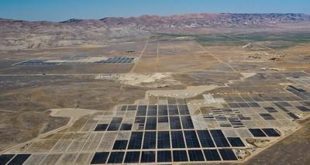Future technology may allow you to step into the sunlight and recharge a cellphone
PITTSBURGH—Developing solar energy that is low-cost, lightweight, and energy efficient has proven to be one of the greatest challenges the science world faces today. Although current plastic solar cells are low in cost and easy to produce, they are not energy efficient and, therefore, not easily commercialized. With grant funding from the National Science Foundation, researchers at the University of Pittsburgh are predicting a way to produce solar cells that will offer more flexibility in generating green energy.
Guangyoung Li, assistant professor of electrical and computer engineering at Pitt, explains that most plastic solar cells today are made from a blend of semiconducting polymers and other carbon-rich molecules. Although this material is usable and costs little, it does not assist with energy efficiency—though it could. Li’s solution is to use a method called Kelvin Probe Force Microscopy (KPFM) that studies the surface potential of cells through microscopy. Although KPFM is not a new idea, Li plans on using it in a dramatically different way.
“The problem with traditional force microscopy is that the resolution is not good enough, so we can’t properly study the domains we need to examine,” says Li. “Throughout my research, I will work to develop an instrument that will be better able to detect the domains formed from different materials.”
This instrument could help Li and others explain the conditions that plastic solar cells should have for better energy efficiency. Currently, plastic solar cells have achieved an energy efficiency rate of 8.6 percent. Li says if he can produce solar cells with a 10 percent or higher efficiency rate, they would have a broad impact on the energy market.
“In the future, I can imagine this new, efficient material anywhere—on buildings, roofs, you name it,” said Li. “You could charge your laptop, cellphone, or iPod simply by having a charger on you and stepping into sunlight.”
Li notes this research will not only help reduce energy consumption, but also will help train young scientists, including the undergraduate and graduate students from underrepresented areas involved in the project. He also notes it is an “ideal platform” to teach the greater community, specifically K-12 students, teachers, industry leaders, and the general public.
 Alternative Energy HQ solar power for homes, wind energy, and bio fuel issues
Alternative Energy HQ solar power for homes, wind energy, and bio fuel issues






